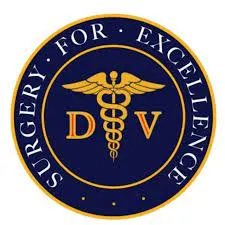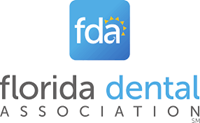Dental Implant Recovery Guide
Dental Implant Recovery: Timeline and Tips for a Smooth Healing Process

Dental implant surgery is a life-changing procedure that provides Port St. Lucie residents with a permanent solution for missing teeth. While the end result—a beautiful, functional smile—is well worth the investment, knowing what to expect during recovery can help ensure a smooth healing process and optimal outcomes.
At St. Lucie Center of Cosmetic Dentistry, led by Dr. Hans Almanzar, we provide comprehensive guidance to our patients throughout their dental implant journey. This detailed recovery timeline and collection of expert tips will help residents of Port St. Lucie, Stuart, Jensen Beach, and Palm City understand what to expect after implant surgery and how to promote optimal healing.
According to the American Academy of Implant Dentistry, over 500,000 dental implants are placed each year in the United States, with a success rate of up to 98%. Following proper post-operative care instructions is key to ensuring your implant joins those success statistics.
In This Article:
- Immediate Post-Operative Care (First 24-48 Hours)
- Week One: The Initial Healing Phase
- Weeks 2-4: Continued Soft Tissue Healing
- Months 1-3: The Osseointegration Process
- Months 3-6: Final Healing and Restoration
- Diet Recommendations During Recovery
- Oral Hygiene During the Healing Process
- Recognizing and Addressing Common Complications
- Recovery Experiences from St. Lucie County Residents
- Frequently Asked Questions About Implant Recovery
Immediate Post-Operative Care (First 24-48 Hours)
Managing the Critical First Days After Surgery
The first 24-48 hours following dental implant surgery are crucial for establishing the foundation for successful healing. During this period, our Port St. Lucie patients should focus on controlling bleeding, managing discomfort, and protecting the surgical site.
What to Expect:
- Bleeding: Some oozing of blood is normal for the first 24 hours. You’ll leave our Port St. Lucie office with gauze pads to bite down on to help control bleeding.
- Swelling: Facial swelling typically increases over the first 48-72 hours before gradually subsiding.
- Discomfort: Most patients experience mild to moderate discomfort that peaks within the first 48 hours.
- Bruising: Some patients may develop bruising around the implant area or even extending to the neck, which is normal and will resolve on its own.
Do’s
- Apply ice packs to your face in 20-minute intervals (20 on, 20 off) to reduce swelling
- Take prescribed pain medication and antibiotics exactly as directed
- Rest with your head elevated using two pillows
- Drink plenty of cool fluids (avoid using straws)
- Replace gauze pads as needed until bleeding subsides
Don’ts
- Don’t rinse, spit, or use mouthwash for the first 24 hours
- Don’t smoke or use tobacco products (delays healing significantly)
- Don’t drink alcohol or carbonated beverages
- Don’t touch the surgical site with your fingers or tongue
- Don’t engage in strenuous physical activities
For our patients from Stuart, Jensen Beach, and Palm City: If you experience severe pain, excessive bleeding that doesn't subside with pressure, or a fever over 101°F, contact our Port St. Lucie office immediately at (772) 242-4124.
Week One: The Initial Healing Phase
Navigating the First Week Post-Surgery
As you progress through the first week after implant surgery, your body begins the initial healing process. Swelling typically peaks around day 3 and then gradually subsides. For our St. Lucie County patients, this week is about managing discomfort while protecting the implant site.
What to Expect:
- Decreasing Pain: Discomfort should begin to diminish, though you may still need prescribed pain medication
- Reduced Bleeding: Any bleeding should have mostly stopped by days 2-3
- Gradual Reduction in Swelling: Facial swelling begins to subside after day 3
- Sutures Present: You’ll still have sutures in place (unless dissolvable sutures were used)
- Some Dietary Limitations: You’ll need to continue with soft foods
Key Recovery Activities:
- Gentle Saltwater Rinses: Beginning 24 hours after surgery, rinse with warm salt water (½ teaspoon salt in 8 oz warm water) 4-5 times daily, especially after meals
- Transition to OTC Pain Relief: As discomfort diminishes, transition from prescription medication to over-the-counter options as directed
- Careful Brushing: Resume gentle brushing of teeth away from the surgical site
- Continue Ice Application: If swelling persists, continue with ice packs for the first 48-72 hours, then switch to warm compresses if directed
- Follow-Up Visit: Typically scheduled around day 7-10 to check healing progress and possibly remove non-dissolvable sutures
Important Warning Signs
During this first week, be alert for signs that warrant contacting our Port St. Lucie office:
- Increasing pain after day 3 (rather than decreasing)
- Excessive or renewed bleeding
- Significant swelling that worsens after day 3
- Difficulty swallowing or breathing
- Fever or signs of infection
- Implant feeling loose or shifted
Weeks 2-4: Continued Soft Tissue Healing
Transitioning to Normal Activities
For our Jensen Beach and Palm City patients, the second to fourth weeks mark a significant improvement in comfort and function. During this phase, soft tissue healing progresses substantially, though the implant is still in the early stages of integrating with your jawbone.
What to Expect:
- Minimal Discomfort: Most patients no longer require pain medication
- Resolved Swelling: Facial swelling should be mostly or completely gone
- Gum Healing: The gum tissue around the implant continues to heal and reshape
- Improved Function: Eating becomes more comfortable, though you should still avoid very hard foods
- Return to Normal Activities: Most patients can resume regular daily activities, though strenuous exercise may still be limited
Key Recovery Activities:
- Resume Normal Oral Hygiene: Brushing and flossing routine should be back to normal, though still being gentle around the implant site
- Gradual Diet Expansion: Begin introducing more foods but continue avoiding extremely hard, crunchy, or sticky items
- Continue Saltwater Rinses: Especially after meals to keep the area clean
- Temporary Restoration Care: If you have a temporary crown or prosthesis, follow specific care instructions from our Port St. Lucie team
- Follow-Up Appointment: You may have a follow-up visit to check healing progress
While the surface gum tissue appears healed during this period, it's important for Stuart and Port St. Lucie patients to remember that the critical osseointegration process (bonding of the implant to your jawbone) is still in the early stages. Protecting your implant from excessive forces remains important.
Months 1-3: The Osseointegration Process
The Critical Bone Integration Phase

During months 1-3 following your implant surgery at St. Lucie Center of Cosmetic Dentistry, the most important process is happening beneath the surface—osseointegration. This is when your jawbone grows around and fuses with the titanium implant, creating a permanent bond.
What to Expect:
- Minimal Visible Changes: Most external healing is complete, though the implant site continues to mature
- Normal Comfort Levels: There should be no pain associated with the implant
- Continued Internal Healing: The bone integration process is actively ongoing
- Temporary Restoration Function: If you have a temporary crown or prosthesis, it should be functioning well for everyday activities
Key Recovery Activities:
- Maintain Excellent Oral Hygiene: Regular brushing, flossing, and scheduled professional cleanings are essential for implant success
- Follow Diet Recommendations: While you can eat a wider variety of foods, continue to avoid excessive forces on the implant area
- Attend Scheduled Check-ups: Your dentist will monitor the osseointegration process
- Avoid Tobacco Products: Smoking significantly impairs the osseointegration process and increases failure risk
- Protect from Trauma: Take precautions to avoid impacts to the implant area
For our Port St. Lucie patients with All-on-4 implants, this phase is particularly important as all four implants must properly integrate to support the full-arch restoration. Following care instructions precisely during this period is crucial for long-term success.
Months 3-6: Final Healing and Restoration
Completing Your Implant Journey
For most of our St. Lucie County patients, the 3-6 month mark represents the completion of the osseointegration process and the transition to the final restoration phase. This is the exciting period when your permanent crown, bridge, or prosthesis is placed, completing your smile transformation.
What to Expect:
- Completely Healed Tissues: Both soft tissues and bone should be fully healed
- Stable Implant: The implant should be firmly integrated with your jawbone
- Abutment Placement: If not placed during the initial surgery, the abutment (connector piece) may be attached during this phase
- Final Impressions: Detailed impressions will be taken for your permanent restoration
- Permanent Restoration: Your custom-crafted crown, bridge, or full-arch prosthesis will be placed
Key Activities:
- Final Assessment: Dr. Almanzar will evaluate implant integration before proceeding with the final restoration
- Restoration Fitting: Your permanent tooth replacement will be carefully fitted and adjusted for optimal comfort and function
- Bite Adjustment: Minor adjustments ensure your bite is perfectly balanced
- Restoration Care Instructions: You’ll receive specific guidance on caring for your new restoration
- Long-term Maintenance Plan: A schedule for regular check-ups and professional cleanings will be established
For most patients from Stuart, Jensen Beach, and Palm City, this marks the end of the implant recovery process—though proper maintenance will continue indefinitely. Once your permanent restoration is in place, your implant should look, feel, and function just like a natural tooth.
Diet Recommendations During Recovery
Proper nutrition is essential for healing after dental implant surgery, but food choices must be adapted to protect the surgical site. Here's a progressive diet plan for our Port St. Lucie patients throughout the recovery process:
Phase 1: First 24-48 Hours
Focus on Cool, Soft, Liquid Foods:
- Cold smoothies (no straws)
- Yogurt, pudding, and applesauce
- Ice cream and sorbet
- Protein shakes and meal replacement drinks
- Cool soup (not hot)
- Plenty of cool water (no carbonation)
Phase 2: Days 3-7
Introduce Soft, Easy-to-Chew Foods:
- Scrambled eggs
- Mashed potatoes
- Oatmeal and cream of wheat
- Pasta and well-cooked rice
- Soft-cooked vegetables
- Tender fish and ground meat
- Soft bread without crusts
Phase 3: Weeks 2-4
Gradually Add More Texture:
- Soft sandwiches and softer fruits
- Well-cooked vegetables
- Tender meats cut into small pieces
- Soft cheeses and dairy products
- Pancakes and soft baked goods
Phase 4: Months 1-3
Continue to Avoid These Foods:
- Very hard foods (nuts, hard candies, ice)
- Chewy foods (caramels, tough meats)
- Foods with small seeds that could get lodged in the surgical site
- Extremely hot foods or beverages
- Alcoholic beverages (interfere with healing and medication)
- Spicy foods that might irritate the surgical site
For a complete guide to eating after dental implant surgery, including recipe ideas, read our article: What to Eat After Getting Dental Implants.
Despite dietary restrictions, it's important for our Jensen Beach and Palm City patients to maintain good nutrition during the healing process. Focus on protein, vitamins C and D, calcium, and staying well-hydrated to support optimal healing.
Oral Hygiene During the Healing Process
Maintaining proper oral hygiene after dental implant surgery is essential for preventing infection and ensuring successful healing. Here's how to care for your mouth during each phase of recovery:
First 24 Hours
- Avoid rinsing, spitting, or touching the surgical site
- Don’t brush the surgical area, but continue gentle brushing of other teeth
- No mouthwash or other oral hygiene products unless specifically prescribed
- Allow blood clot formation without disturbance
Days 2-7
- Begin gentle saltwater rinses (½ teaspoon salt in 8 oz warm water) 4-5 times daily, especially after meals
- Continue normal brushing away from the implant site
- Use prescribed mouth rinse if provided by our Port St. Lucie office
- Avoid direct brushing of the surgical site
Weeks 2-4
- Resume normal brushing with a soft-bristled toothbrush, being gentle around the implant area
- Continue saltwater rinses after meals
- Begin gentle cleaning around the implant site as directed by Dr. Almanzar
- Avoid high-powered electric toothbrushes near the implant unless approved
Long-term Care (After Healing)
- Brush at least twice daily with soft-bristled toothbrush
- Floss daily, including around the implant using techniques recommended by our team
- Consider specialized tools like interdental brushes or water flossers
- Use non-abrasive, non-alcoholic mouth rinses
- Maintain regular professional cleanings at our Port St. Lucie office (typically every 3-6 months)
According to a study in the Journal of Dental Research, proper oral hygiene is one of the most significant factors in long-term implant success. Plaque buildup around implants can lead to peri-implantitis, a condition similar to gum disease that can cause implant failure if not addressed.
Recognizing and Addressing Common Complications
While dental implant procedures have a high success rate, St. Lucie County residents should be aware of potential complications that can arise during recovery. Prompt recognition and treatment are key to addressing these issues:



